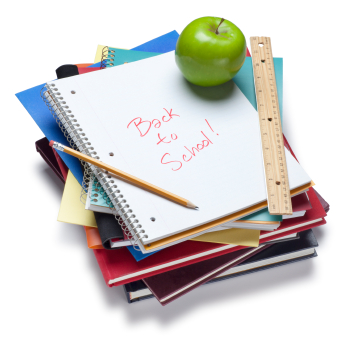by Shari Finnell
When it really comes down to it, good writing — the type of stuff people will actually bother to read — is built on a foundation that you probably learned back in grade school.
As Sherlock supposedly would put it: “Elementary, my dear Watson. Elementary.”
The truth of that hit home to me the other day as I sifted through the mound of books, homework, binders and parental consent forms my 11-year-old dumped on the kitchen table after just a couple of weeks at school.
In the midst of all this stuff, something caught my eye: “6 + 1 Traits of Writing Checklist.” I fully expected to find something a bit lightweight — targeted to the level of a bunch of kids still mesmerized by the likes of Justin Bieber.
Instead, I found this one-page list (an excerpt from a Scholastic book) filled with priceless gems applicable to anyone who wants to write good content for a blog, a website, a magazine, a newspaper, a book … you got it … just about any type of content. It provides a solid foundation for tackling all your future writing projects.
Back to the Basics
When faced with the prospect of writing an article against a deadline, some of us tend to sweat, agonize and suffer from feelings of inadequacy about our ability to pull it all together. We could save ourselves from this dilemma by taking a mental trip to elementary school and getting back to the basics.
Here is my interpretation of that 6 + 1 Writing Checklist. Use it to get down to the business of writing some really great content.
1. WHAT’S THE IDEA?
Think of at least one main idea and make sure it’s interesting and makes sense. You can actually write about dozens of topics without a single idea in any of them. Don’t just regurgitate the facts about a topic. Find an approach — an idea — and explore it. When you find that idea, make sure it’s something that grabs readers’ attention. Then try to present it in an out-of-the ordinary way.
2. ARE YOUR SENTENCES FLUENT?
The 6th-grade Checklist reinforced something that I always preach: Make sure your writing is easy to read. Test it by reading it out loud. If you’re sitting in a coffee shop or a crowded office, you may want to read it out loud “in your head.” Your neighbors may not appreciate your personal conversation with yourself. If you find yourself pausing, stumbling or re-reading graphs, your article is not flowing as well as it could. Your sentences should have a variety of lengths and approaches. They shouldn’t be choppy or aimless.
3. ARE YOU USING A GOOD CHOICE OF WORDS?
Don’t overthink this one. Choosing big words to show that you have a master’s degree in English Literature won’t do anything to win you votes with readers. Just give them good straight talk as you would in a conversation, especially if you’re writing a blog. Also, get a bit creative. Choose wisely but take risks, our 6th-grade tutorial says. After reading your piece, will readers find the content worth remembering? One of my favorite articles is a gem written by a Sports Illustrated writer. In describing his subject, he used the line “No. 4 sandpaper voice.” The entire article was memorable because of great lines like that.
4. IS IT ORGANIZED?
When it comes to organizing your article, stick to the 6th-grade rules. Your first few paragraphs should make the reader want to keep reading. Also, the piece should be arranged logically, allowing the ready to follow along without much effort. Don’t get too predictable, though. Throw in a few surprises along the way. And make sure you tie up all loose ends before reaching your conclusion. You don’t want readers finishing your piece with question marks looming in their heads.
5. DOES YOUR WRITING HAVE A “VOICE?”
One of the fastest ways to create an article that’s dead on arrival is by being too careful in its execution. Make sure you’re writing with style and flavor. Spice it up. Write content that pulls your readers in.
6. ARE YOU STILL A BIT CONVENTIONAL?
Just because you’re writing content that’s flavorful, don’t throw all cares to the wind. Make sure your readers are staying with you by writing content that’s grammatically correct. That means correct spelling, correct use of punctuation marks and writing that’s clean and polished. Nothing ruins an enjoyable read more than coming across a misspelled word or incorrect grammar. It makes people question why they’re wasting their time on your content if you’re writing like a 2nd-grader instead of a 6th-grader.
+1. HOW’S YOUR OVERALL PRESENTATION?
Allow your readers to enjoy the ride. Use a few varying font sizes. Make sure your headline is interesting and bold. It’s also important to break up your paragraphs to give readers a bit of white space that allows them to flow more easily from paragraph to paragraph. If at all possible, use numbers, bullets and subheads (shorter headlines). Throw in a couple of illustrations, charts and graphs.
Now, what are you waiting for? Start writing. Still feeling intimidated? Get over it. If a 6th-grader can do it, so can you.